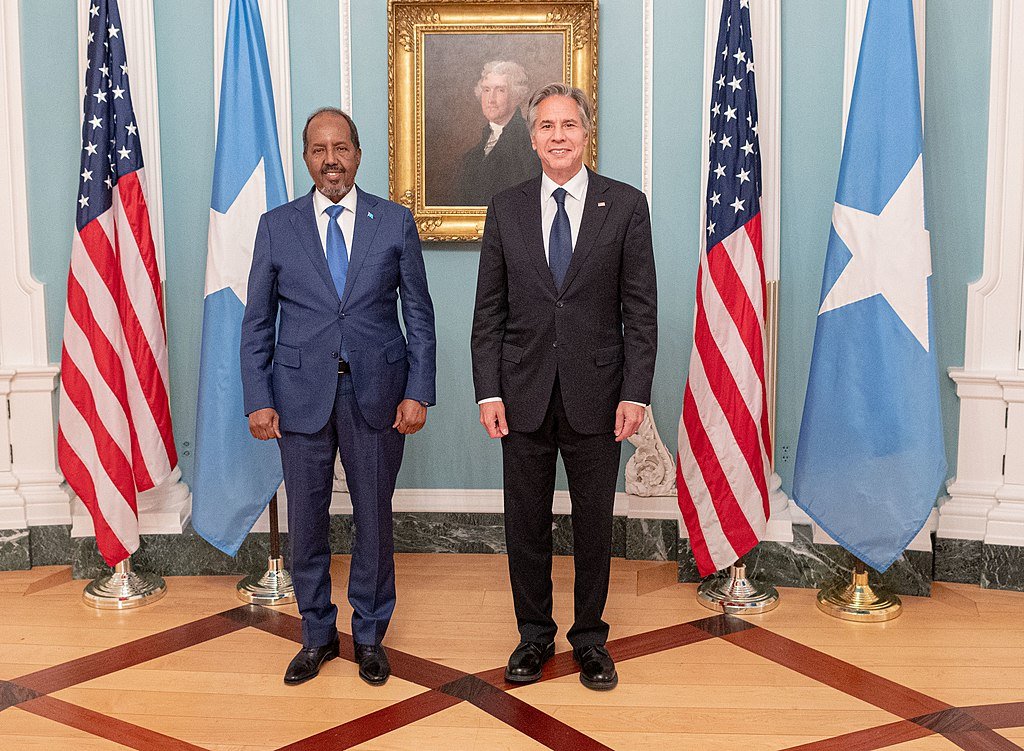Story at a glance…
-
An important leader of al-Shabaab was killed recently.
-
It’s the most recent event of a more-than-20-year war that has been completely forgotten.
-
The story of America’s war in Somalia is filled with empty strategy, and has little to do with terrorism.
“The command’s initial assessment is that the strike killed an al-Shabaab leader and that no civilians were injured or killed,” read a statement from U.S. Africa Command about a strike 370 kilometers southwest of Mogadishu, Somalia.
The name of this leader was undisclosed, though al Jazeera reported that it was Abdullahi Nadir, one of the co-founders of the armed group, its chief prosecutor, and perhaps soon to take complete control of al-Shabaab, or “the Youth”.
It’s not the first terrorist leader Biden has assassinated this year. In summer a drone strike in Kabul killed Ayman al-Zawahiri, the co-mastermind of the September 11th Attacks, and one of the ideological fathers of al-Qaeda.
Noticeably absent however was any kind of fanfare, and as many columns were written about where the drone that killed Zawahiri launched from, as were written about his death.
By comparison even to this damp reaction, the killing Abdullahi Nadir seems a mere footnote, to be immediately superseded with questions about why, and how long.
America’s forgotten war
Somalia briefly wiggled its way into the headlines in May when Biden announced he was deploying 500 military personnel there mostly to train and advise the Somalian armed forces to fight al-Shabaab. Before that, the only mention Somalia got had been when former President Trump decided to pull all American forces out, but then as usual, capitulated to pressure from generals.
Before that, it was all the way back in 2017 when he gave orders to loosen the rules of engagement in Somalia to allow for more liberal targeting of the armed group.
Lost in these distant shades of memory from the Global War on Terror is any reminder to the U.S. people, who have now nearly completely accepted endless anti-terrorist operations around the globe, why Somalia, why al-Shabaab, who makes up al-Shabaab, are they the same people as they were when Bush Jr. attacked them, and what ultimately is America’s interest in Somalia?
America’s war in Somalia is the nation’s longest, waged always against Islamic people; not all of them terrorists, rarely with direct force of arms as in Afghanistan and Iraq. The casualties, both direct and indirect, have killed comparatively few civilians, until one accounts for the famine which occurred in 2011, then it becomes far more deadly.
In 2009, Johns Hopkins School of Advanced International Studies researchers Ashley Elliot and Georg-Sebastian Holzer published The Invention of Terrorism in Somalia in the South African Journal of International Affairs. They explained the history, even as early as 2009, as “detached from the Somali context”.
Nomothetic fallacies over US political agency encourage paradigms to linger long after the facts have failed them a disjuncture brought to light most visibly during the second term of the Bush administration. In this period, the unrealities of the ‘war on terror’ were refracted instrumentally by local actors in the Horn of Africa, creating a web of distorting friend-enemy distinctions. While the Obama administration is less devoted than its predecessor to imagining an opponent in Somalia, it too has misread the core political logic.
During a period of statelessness, from 1991 to 2001 in which the only authority in the country was the Islamic Courts Union, a regional membership of people with natural authority such as clerical jurisprudents and clan elders, the US paid little attention to the increasingly nagging headache the country gave to international policymakers.
In what Holzer and Elliot describe as “a framework that has since been applied from Haiti to Afghanistan,” the UN sanctioned a massive influx of international actors to try to build a modern state, with the state in this applied framework being the secret to peace and economic development.
“While the vision of state-building as a solution to the Somali conflict lasted throughout the 1990s, the United States and other states proved gradually less willing to act on it. After 9/11, however, Somalia’s changing politics and fortunes were increasingly surveyed through the lens of ‘terrorism’,” they write.
Relying on the evergreen myth of terrorist “Safe Havens” and pointing to the stateless country governed only by the “Islamic Courts Union” the US paid the Ethiopians to launch an invasion of the country.
PICTURED ABOVE: Somali President Hassan Sheikh Mohamud with Antony Blinken. PC: State Dept, handout.
If you think the stories you’ve just read were worth a few dollars, consider donating here to our modest $500-a-year administration costs.
If you think the stories you’ve just read were worth a few dollars, consider donating here to our modest $500-a-year administration costs.
Continue exploring this topic — Somalia — Trump Allegedly Wants Troops Out of Somalia — America’s Forgotten Terror Battleground
Continue exploring this topic — War on Terror — The U.S. Is Quietly Returning to War in Syria
Continue exploring this topic — Afghanistan — 9/11 Victim Families Urge Biden to Give Afghanistan Back the $7 Billion He Took in Their Name




